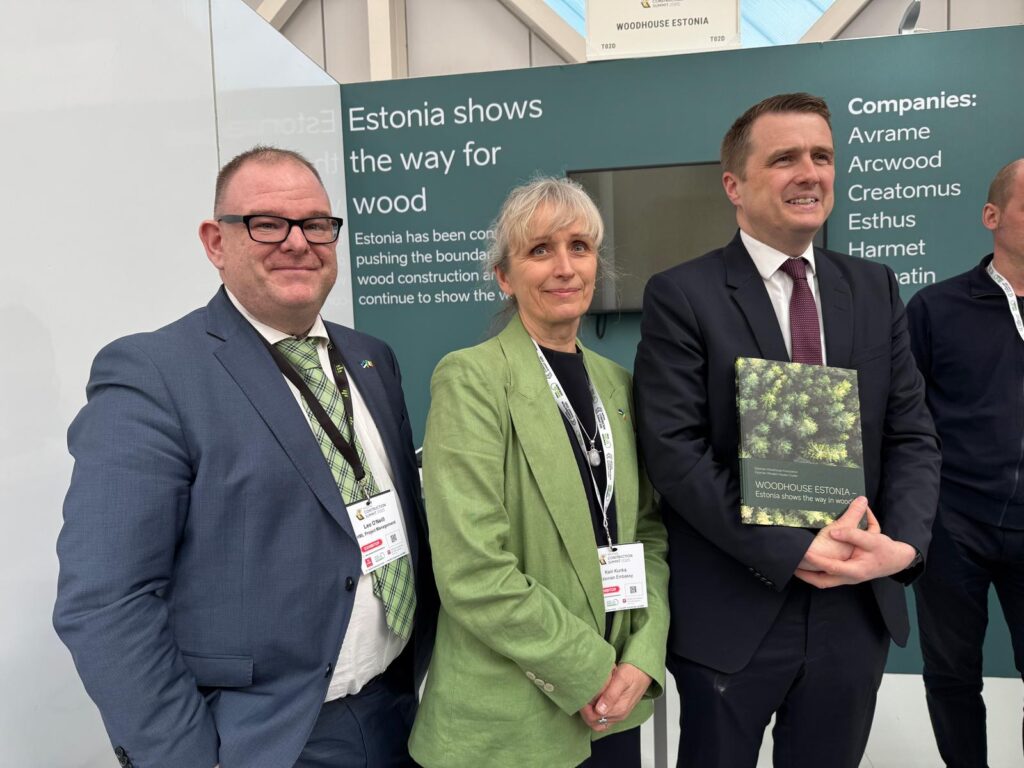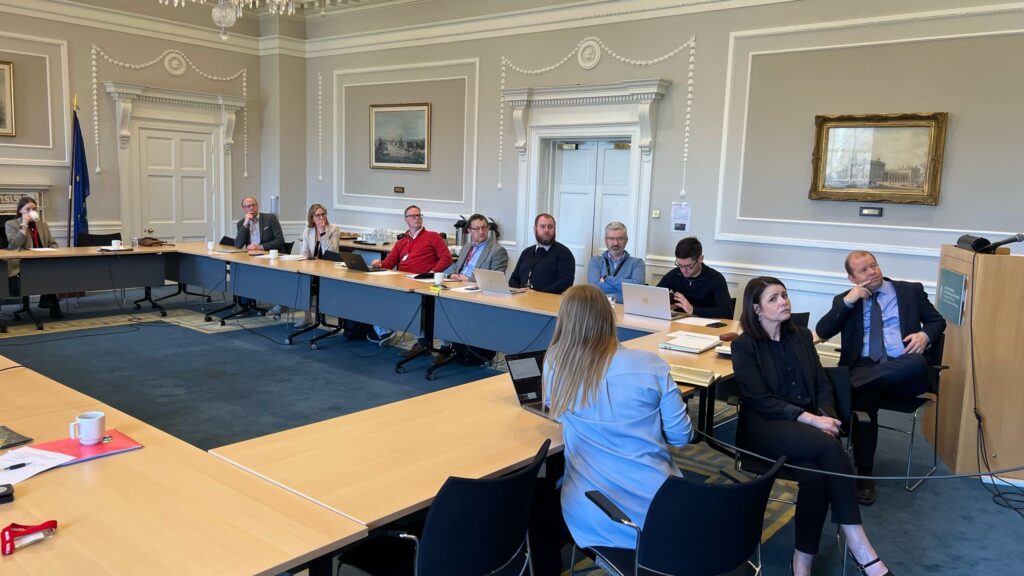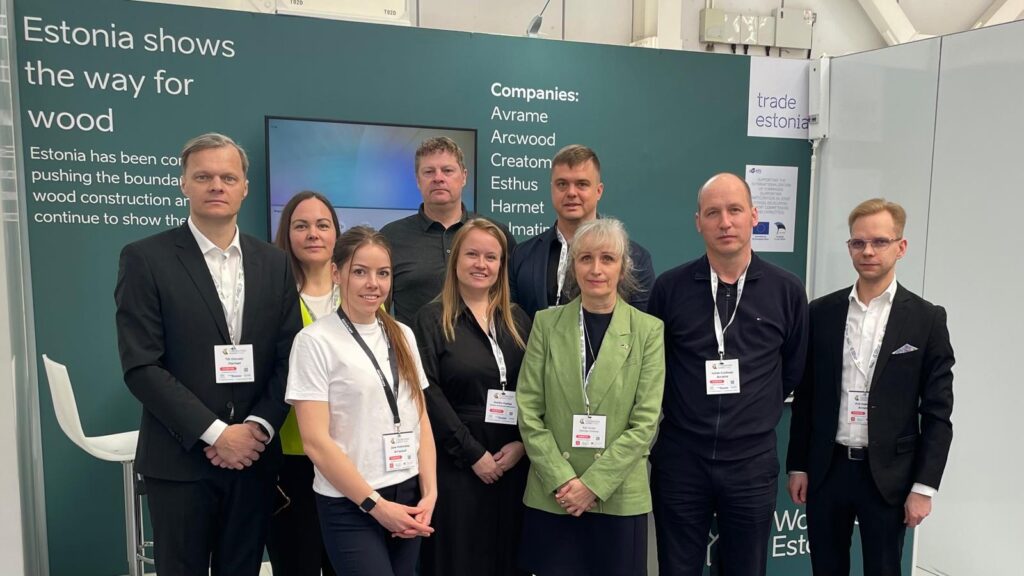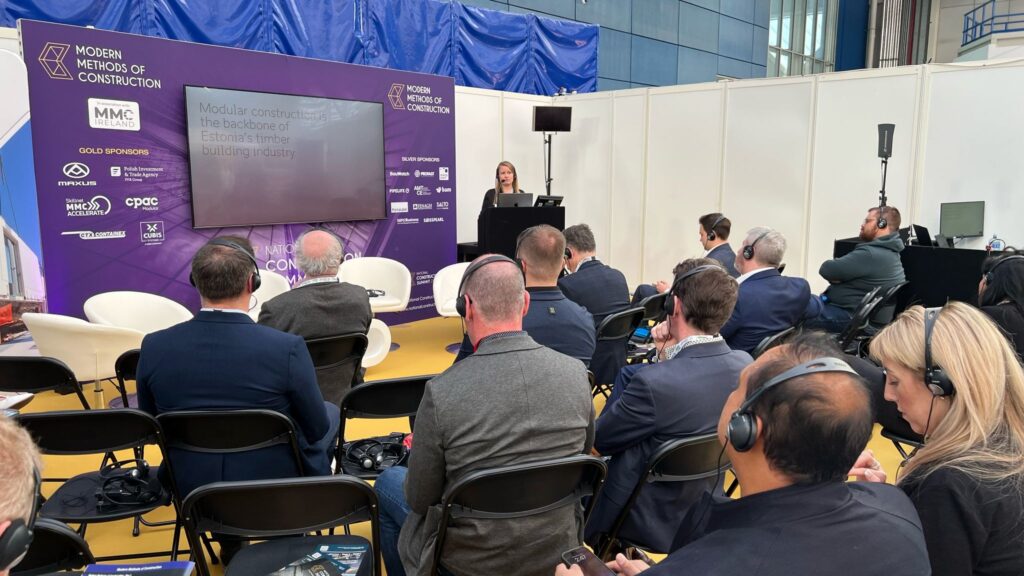From April 1–3, 2025, a delegation from Estonia’s woodhouse sector carried out another visit to Ireland. This time, the focus was on participating in the National Construction Summit held in Dublin – one of the most significant conferences and trade fairs in the construction field in Ireland. The visit provided even deeper insight into how complex and contradictory entering a market in the midst of a housing crisis can be – yet one that holds remarkable potential.
Ireland’s housing crisis has persisted for years and continues to worsen. The shortage of new homes has led to a mass exodus of young people from the country, and the government is under increasing pressure. The ambitious goal of delivering 300,000 new homes by 2030 sounds promising on paper, but in practice it faces major hurdles – including a slow planning process, insufficient infrastructure, and a lack of skilled labor.
“Both Estonian and Irish experts, including UCD’s emeritus professor of architecture Owen Lewis, acknowledge that the government’s targets are not realistic. A breakthrough is unlikely to happen overnight, but even gradual progress could make the Irish market attractive for Estonian woodhouse manufacturers. Companies that can adapt to local conditions and act consistently may significantly grow their turnover through the Irish market,” explains Annika Kadaja, CEO of the Estonian Woodhouse Association.
Certification barrier or competitive edge?
“In Estonia and many other EU countries, CE-marking is often sufficient, but Ireland follows its own path. The local regulator, the National Standards Authority of Ireland (NSAI), requires additional certifications, the acquisition of which can take 9 to 15 months – or even longer, as noted by one Polish company that has been in the process for three years,” commented Kairi Künka, Estonian Ambassador to Ireland.
When meeting with the Estonian delegation, NSAI director Martin Searson was direct in his remarks, emphasizing that Ireland’s damp climate, strong winds, and mold risk leave no room for compromise on quality. However, he also expressed openness to further dialogue and interest in visiting Estonia to better understand local manufacturing processes and possible formats for cooperation.
It is important to note that many of the solutions offered by the Estonian woodhouse sector – such as modular (3D volumetric) timber-frame buildings – are not yet widely used in Ireland. While this may initially present regulatory challenges, it also opens the door for market entry with innovative and sustainable solutions.
One promising example is the direction taken by Ireland’s Department of Education, which prioritizes the use of carbon-sequestering materials in the construction of schools and kindergartens. These kinds of programs may create more immediate and practical opportunities for Estonian companies to introduce solutions that are not yet available from local providers.

Is Ireland Worth the Wait?
Ireland is certainly not an easy market. It requires patience from entrepreneurs, strong local partners, a solid understanding of the country’s specific characteristics, and a willingness to navigate complex bureaucracy. Still, the potential is there — the housing crisis is calling out for solutions, and Estonia’s woodhouse sector is well positioned to respond with high-quality, fast-to-build and environmentally friendly solutions.
Although the Irish government’s official target is to build up to 50,000 new homes annually, the actual output has remained closer to 30,000 units in recent years. “If Estonian companies could capture even just 1% of that market — around 300 homes per year — the estimated annual turnover could range between €45 to €60 million, depending on the size and complexity of the projects,” says Annika Kadaja, referring to a conservatively calculated but still significant export potential.
Of particular note are the Irish government’s recent discussions on regulatory changes, aiming to allow the construction of standalone small homes — such as modular or garden houses — up to 40 m² in size without a building permit. Such a change would accelerate the delivery of affordable housing and offer Estonian producers additional entry points into the Irish market, while also reducing the administrative burden.
The first steps into the market have already been taken: a number of residentials houses and small homes have been delivered, active cooperation with Irish partners has been initiated, NSAI certification processes are underway, and the first Estonian subsidiary has been established in Ireland. Considering that Ireland is seeking solutions across all residential segments — from single-family homes and small houses to semi-detached houses, apartment blocks, and dormitories — there is broad potential for market entry.
Consistency and High-Level Advocacy
Over the past two years, the Estonian Embassy in Dublin, the Estonian Woodhouse Association, and the Estonian Chamber of Commerce and Industry have built a strong cooperation network. The construction summit in Dublin played an important role in increasing visibility — Minister for Housing James Browne visited the Estonian stand, and meaningful discussions were held with Caroline Timmers, Deputy Secretary General of the Department of Housing.
Equally important has been the deepening of contacts with members of parliament, local developers, and municipal and regional decision-makers. For example, significant development activity is expected in the city of Limerick, where Estonian companies could have a role to play — in fact, a visit to Limerick is already planned for May, with the embassy and Estonian businesses meeting local project stakeholders on site.

Organised by the Estonian Embassy in Dublin, the Estonian Woodhouse Association and the Estonian Chamber of Commerce and Industry, the delegation included nine Estonian companies: Harmet OÜ, ARCWOOD, Palmatin Wooden Houses, Creatomus Solutions OÜ, ESTHUS , AVRAME LLC, Hausing Technologies, and the recently established HML Project Management Ireland. The delegation represented both large-scale manufacturers and innovative technology companies. Annika Kadaja, CEO of the Estonian Woodhouse Association, and Renee Puusepp from Creatomus presented Estonia’s timber and modular construction solutions at the summit, highlighting the sector’s experience and innovation as a potential answer to Ireland’s housing crisis.
The Estonian stand, supported by the Estonian Business and Innovation Agency (EIS), provided the delegation with the opportunity to meet with pre-arranged partners, establish new contacts, and showcase what Estonia’s timber construction sector has to offer. In addition, the delegation took part in a networking reception organized by the Polish Embassy, where connections were made with Polish companies who are also exploring opportunities in the Irish market.



